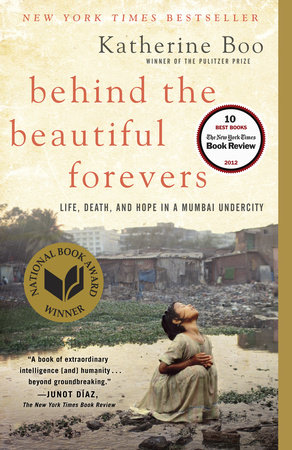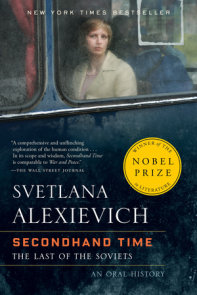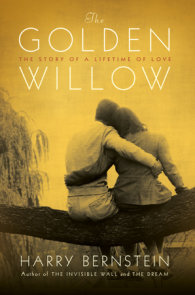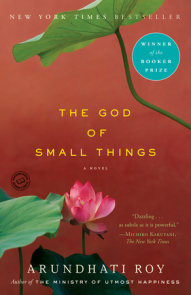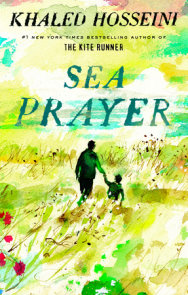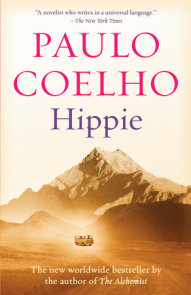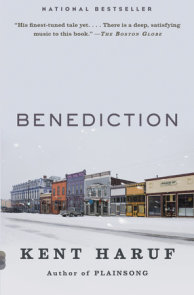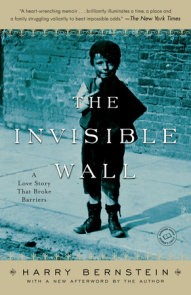TEACHING GUIDE
NOTE TO TEACHERS
Please click on the PDF link below to download the Teacher’s Guide.
Annawadi is a trash-strewn slum by the Mumbai international airport—a slum surrounded on all sides by luxury hotels. The hotels and airport are gleaming talismans, announcing India’s new status as the second-fastest-growing economy on earth. Katherine Boo’s book, a work of narrative nonfiction, tells a story of the new India that is more hidden than Mumbai’s grand new buildings. She recounts three years in the lives of the families who work and dream in prosperity’s shadow, and who call Annawadi their home.
Behind the Beautiful Forevers begins by introducing the reader to Abdul, a Muslim teenager who buys rich people’s garbage and sells it to recyclers to support his family of eleven. Boo’s account of Abdul’s work and life—including a wrongful imprisonment by a brutal police force—allows the reader to experience the sometimes harsh realities of slum life with intimacy and immediacy. Through the experiences of other families, the author shows how corruption in institutions from the public hospitals to charities to the educational system undermines community life. At the same time, the book explores how deep friendships, family relationships, and personal philosophies keep many young Annawadians hopeful in a time of global change. In the end, by documenting the social, political, economic, and environmental forces that shape daily life and moral choices at Annawadi, the book reveals the formidable obstacles to equality and social mobility in India. But beyond that, it reveals the extraordinary courage and ingenuity of seemingly ordinary families who are trying to fight their way out of poverty in a fast-changing global age.
This guide is separated into three sections: Style and Structure, Comprehension and Discussion, and Personal Essays. The intent of the prompts in the first two sections is to foster classroom and group discussion. The Personal Essays section is intended for further reflective and/or investigative individual responses.
Behind the Beautiful Forevers, a powerful work of narrative nonfiction, supports the national Common Core State Standards for high school curriculums in the reading of informational text, historical text, and, in some instances, literature. Each question and prompt in this guide references particular Common Core State Standards. The specific language of these standards is delineated at the end of this guide. A complete list of Common Core State Standards can be found at http://www.corestandards.org/thestandards.
ABOUT THE AUTHOR
Katherine Boo is a staff writer at The New Yorker and a former reporter and editor for The Washington Post. Her reporting has been awarded a Pulitzer Prize for Public Service, a MacArthur “Genius” grant, and a National Magazine Award. For the last decade, she has divided her time between the United States and India. This is her first book.
GUIDED READING AND DISCCUSION QUESTIONS
Style and Structure
1. Behind the Beautiful Forevers opens with Abdul Husain hiding from the police after his disabled neighbor accuses him, his father, and his older sister of setting her on fire. As Abdul burrows in his trash shed, Boo provides brief and stark contrasting descriptions of squatters’ living conditions in Annawadi and the buildings surrounding India’s gleaming international airport, Why do you think the author opens the book with this particular incident and the contrasting descriptions? (RI. 11-12.6)
2. The next sections of the book are: 1) “Undercitizens,” 2) “The Business of Burning,” 3) “A Little Wildness,” and 4) “Up and Out.” In “Undercitizens,” Boo introduces the reader to other Annawadi residents besides Abdul, including Asha, an aspiring Annawadi politician; Sunil, an essentially orphaned trash scavenger; and Manju, Asha’s virtuous daughter, who is poised to become Annawadi’s first female college graduate. “The Business of Burning” is about how economic hope and official corruption intensify conflicts among Annawadians. “A Little Wildness” details the shocking deaths of several young Annawadians, which get covered up by public officials. Finally, “Up and Out” provides closure to the immediate conflicts presented in Behind the Beautiful Forevers. These closures are largely psychological in nature. While some Annawadians have finally moved “up” in social status, they are certainly not “out”—free from the undercity’s grip. Others retain the same undercity position yet have gathered inner strength to go on trying. Each of these sections begins with a quote from an Annawadi resident. Discuss the choice of quotes and their relation to the section titles. (RI. 11-12.5, RH. 11-12.5)
3. Reviews of this book often say it reads like a novel. In the Author’s Note, however, the writer reveals the years of reporting and documentary evidence, from videotape to official records, that are behind this true, nonfiction story. Why do you think the author put this information at the end, and put Abdul’s experience in the trash shed at the beginning? Do you agree or disagree with Boo’s choice?
COMPREHENSION AND DISCUSSION
Prologue
1. In the prologue, we are introduced to Abdul, who is hiding after being accused of attempted murder. He is Muslim, a religious minority in the largely Hindu slum of Annawadi. (Note: A brief history of Hindu-Muslim tension since Indian independence from Britain will enhance the reading experience. See the bibliography at the end of this guide.) What are the two reasons Abdul is fearful of his neighbors? Discuss the role religion plays in initiating this conflict. (RI. 11-12.7, RH. 11-12.3)
2. Make a list of the items found in Abdul’s shed. As you read Behind the Beautiful Forevers, analyze what this trash reveals about how people live in the overcity—a world Abdul understands only through its throwaways. (RL. 11-12.6)
3. Abdul’s motto is to “avoid trouble.” Why is this especially important to him? Is this a reasonable philosophy of life in a place like Annawadi? (RI. 9-10.8)
Part One: Undercitizens
1. In this section, life in Annawadi is described in further detail, and the reader is introduced to the main subjects of Behind the Beautiful Forevers. Beginning with the introductions in this section and continuing through the rest of the book, create a character traits graphic organizer for each of the following people: Abdul, Zehrunisa, Fatima, Asha, Sunil, and Manju. (Note: Dr. Janet Allen’s “Fleshing Out a Character” organizer from her book Yellow Brick Roads (Stenhouse, 2000) is an excellent example.) Essentially, the chart on each individual should log their thoughts, plans, words, feelings, deeds, actions, strengths, and weaknesses. (RI. 11-12.3)
2. What impact do the Beijing Olympics have on the Annawadi economy and the hopes of the people who live there? What does this impact tell you about the garbage trade’s connection to global markets? (RI. 11-12.1, RI. 11-12.3)
3. What do Annawadians no longer eat, now that they are less poor? (RH. 11-12.1)
4. Describe the sewage lake and what gets dumped in it. Is it a metaphor for the quality of
life in Annawadi? Why or why not? (RI. 11-12.1, RI. 11-12.2)
5. Explain Asha’s observation in Chapter 2 that “[s]he had by now seen past the obvious truth—that Mumbai was a hive of hope and ambition—to a profitable corollary. Mumbai was a place of festering grievance and ambient envy.” (RI. 11-12.4, RI. 11-12.6)
6. Why do the Annawadians seek Asha’s counsel? How does she decide whom she will assist? (RI. 11-12.3)
7. Asha describes her memory of childhood hunger as a taste. How have her actions in Annawadi been shaped by growing up in a rural village where the girls in the family had to go hungry when food was short? (RI. 11-12.1, RI. 11-12.6)
8. In Chapter 3, the reader is introduced to twelve-year-old Sunil Sharma, a Hindu garbage scavenger who has essentially raised himself. Describe his upbringing to this point. What experiences have given him the skill of seeing through people’s actions to the motives behind those actions? (RI. 11-12.3)
9. What does the observation that Sunil “minded being unpitiable only at mealtime” (p. 34) tell you about his character? (RI. 11-12.3)
10. As he searches for recyclable trash, Sunil regularly walks along a concrete wall advertising “Beautiful Forever” Italianate floor tile. Contrast the quality of life of Indian citizens who are able to purchase this luxury tile versus Sunil’s quality of life. (RI. 11-12.2, RI. 11-12.3, RI. 11-12.6)
11. What does Sunil decide he needs to do in order to grow? Describe the place Sunil finally discovers where trash is plentiful. (RI. 1112.3)
12. What are the three distinct regions of Annawadi? (RI. 11-12.3)
13. Describe Kalu and the entertainment he provides to the other boys. Why might gifts like his become valuable in a community where people have little disposable income? (RI. 11-12.3)
14. Why does Sunil decide to remain a scavenger instead of a thief? What role does the Will Smith movie play in his decision? (RI. 11-12.3)
15. In Chapter 4, what does Corporator Subhash Sawant do, illegally, to qualify to run for the Ward 76 office? Why do the residents of the slum support him even though he is corrupt? (RI. 11-12.3)
16. For how long does potable water dribble through the six “trickle-taps” each morning? (RI. 1112.1, RI. 1112.3)
17. Who stirs the people up at the temple? Who do they believe is answering their questions? Consider the role uncertainty plays in their lives as squatters on airport land. Does that uncertainty increase their appreciation for a stranger who claims to have answers to their questions? (RI. 11-12.3)
18. What is Manju’s college experience like at the all-girl college? (RI. 11-12.3)
19. What problem does Manju face understanding the phrase “Love is subordinated”? Why can’t she ask the college boy who lives near her for help in understanding the word? What does her reasoning tell you about how gender relationships differ in different countries? (RI. 11-12.3, RI. 11-12.4)
20. What does Manju do when she “by-hearts”? Why is she confused by the names in The Way of the World by William Congreve? Do you have similar problems with the names of the many characters in this book? (RI. 11-12.3, RI. 11.4)
21. How did Manju get the scar on her neck? How did it change her behavior? (RI. 1112.3)
22. How is Manju rebellious? (RI. 11-12.3)
23. Asha belongs to the Shiv Sena political party. Research its founder Bal Thackeray. Will his belief that migrants should be expelled from Mumbai help Annawadians? Why or why not? (RI. 11-12.1, RI. 11-12.3, RI. 11-12.7, RH. 11-12.1, RH. 11-12.3)
24. According to the slum dwellers, what are the three ways to escape poverty? (RH. 11-12.2)
25. Describe Meena and her relationship with her family. How are Meena’s parents different from Asha in what they allow their daughter to do? (RI. 11-12.3)
26. What do you think the author means when she says Meena’s “defiance spoke to something inside Manju” (p. 67)? (RI. 11-12.3, RI. 11-12.4)
27. What has not yet infected Sunil’s mind? (RI. 11-12.3)
Part Two: The Business of Burning
1. Describe life in Annawadi during monsoon season. (RH. 11-12.3)
2. In what ways is Zehrunisa compassionate toward Fatima? (RI. 1112.3)
3. How does the name that the Annawadians give to Fatima damage her self-esteem? How did her parents’ shame affect her growing up? How does her belated discovery that she is attractive liberate her? (RH. 11-12.3)
4. In Chapter 6, the Husains empty their hut onto the maidan (the “open field”). What of the Husains’ possessions demonstrates their economic well-being? (RH. 11-12.3)
5. What does Vasai represent to Karam and Zehrunisa? (RI. 11-12.3, RH. 11-12.3)
6. What security do Annawadians hope the hut improvements will provide? (RH. 11-12.3)
7. After a shoving match on the maidan, Fatima and Zehrunisa end up at the Sahar police station. Why doesn’t Zehrunisa want Asha’s help in the police station? (RI. 11-12.3, RH. 11-12.3)
8. With whom does family authority reside during the Husain crisis? (RI.11-12.3,RH.11-12.3)
9. What do you think Fatima’s objective was when she set herself on fire? (RI. 11-12.3)
10. Why wouldn’t the onlookers give Fatima water? (RH. 11-12.3)
11. In Chapter 7, of all the firsts that Fatima experiences in the burn ward, which is the most unexpected? (RI. 11-12.3)
12. Why can’t Fatima tell the truth? (RI. 11-12.3, RH. 11-12.3)
13. Who discredits Fatima’s story about being set on fire? How did this unexpected witness come to see what had happened in Fatima’s hut? (RI. 11-12.3)
14. Do you have any compassion for Fatima at this point in the story? (RI.11-12.1)
15. Why does Officer Poornima Paikrao help Fatima give a revised account of the burning?
(RI. 11-12.3, RH. 11-12.3)
16. What two important items is Cooper Hospital lacking? Why? (RH. 11-12.3)
17. Comment on Abdul’s explanation of the incident between Fatima and his mother, “She has taken a small quarrel with my mother and stretched the thing like rubber.” (p. 106) (RI. 11-12.3, RH. 11-12.3)
18. Why is Kehkashan desperate for the fakir’s blessing? Who leans against her during this episode? (RI. 11-12.3)
19. Describe Fatima’s postmortem report and the records room where the report is delivered. Why does the author note the birds and trees thriving just outside the room? (RI. 11-12.6, RH. 11-12.3)
20. Explain the irony in the Muslim purification ritual performed on Fatima’s body. What loss does Zehrunisa mourn most afterward, and why? (RI. 11-12.1, RI. 11-12.6)
21. In Chapter 8, what consolation does Sunil find behind an airport road wall? Why does he keep it a secret? (RI. 11-12.3)
22. Describe how Zehrunisa’s life has “come apart” up to this point. (RI. 11-12.3, RI. 11-12.6)
23. Zehrunisa remembers Saddam Hussein “killing a lot of people somewhere” (p. 122) before Abdul was born. Research the Kurdish massacres under the Hussein regime to calculate Abdul’s approximate age. How does his mother “prove” his age to the criminal justice system? (RI. 11-12.7, RH. 11-12.7)
24. Abdul’s parents tell him they chose his name because Abdul Hakim means “a person who cures others just by his own understanding.” Does the meaning of his name match his personality? Why or why not? (RI. 11-12.3)
25. What thoughts repulse Abdul while being locked in a small, claustrophobic room at the jail? Why did those thoughts surface? (RI.11-12.3)
26. At the detention center, what is Abdul able to do—possibly for the first time ever? (RI. 11-12.3)
27. Describe the Master. Describe the Master’s outsized impact on Abdul and the influence of a Hindu myth on Abdul’s decision to be a better person. (RI. 11-12.3)
Part Three: A Little Wildness
1. In Chapter 9, Asha’s purpose for taking her family to her rural homeland, the Vidarbha region of Maharashtra, is twofold. Explain. (RI. 11-12.3)
2. What do Asha’s relatives understand about life in Mumbai compared to life in rural India just by looking at the visitors from Annawadi? (RI.11-12.1)
3. How is the wealth in the new India distributed? What group makes up nearly a quarter of India’s GDP? Are the rural poor very knowledgeable about the government programs designed to help them? (RH. 11-12.1, RH. 11-12.3)
4. Describe the “Red Belt.” Research Maoist insurgencies in India. What do they reveal about the skepticism some poor people feel about the Indian growth story? (RH. 11-12.3, RH. 11-12.7, RH. 11-12.9)
5. Describe Anil’s personal experience of new “improvements” in farming technique and
practice. Do they make him better or worse off as a sharecropper? (RH. 11-12.1)
6. What is bittersweet about Anil’s dream? (RH. 11-12.1)
7. Why does Manju comment, “Marquee Effect” (p. 143), as she gazes at her bell bottoms and tunic in the mirror? (RI. 11-12.3)
8. Asha has made one migration, from rural to urban India. What is the second migration she is now trying to make? Which of these migrations do you think is harder?
9. Daughters are considered a liability to Annawadians. Have the women in this book been liabilities to their families? Explain. (RI. 11-12.3, RI. 11-12.3)
10. After passing the state board exams and another year of study, Manju will be qualified to teach. However she has no hope of securing a government teaching position. Why? (RH. 11-12.2)
11. For Manju, what is the best part of participating in the Indian Civil Defense Corps practice maneuvers? (RH. 11-12.3)
12. What does Asha do on her fortieth birthday? How is this action significant in terms of her quest for overcitizen acceptance? What does her husband do? (RH. 11-12.3)
13. In Chapter 10, Sunil, Rahul (Manju’s brother), Zehrunisa, and Mr. Kamble all pass by a scavenger crying for help while lying in the mud of an airport thoroughfare. The scavenger’s leg has been mangled—probably from being run over by a vehicle. Describe each individual’s reason for not lending a hand. Are these reasons valid? What would you have done for this man? Do you think your response would be different if you subsisted as the Annawadians do? (RI. 11-12.2, RH. 11-12.8)
14. What are the official causes of death of the three unidentified people? What is the purpose of the inaccuracies? (RI. 11-12.1)
15. The deaths disconcert Sunil, as do the rumors. What are these rumors? (RI. 11-12.1)
16. According to Sunil, Kalu is like one of the parrots that nest in the jamun fruit tree at the far side of the sewage lake. Why does he make this comparison? What leads him to make this comparison? (RI. 11-12.3)
17. After his capture, what agreement does Kalu make with the local police? (RH. 11-12.1)
18. What has Kalu been calling Zehrunisa for a year? Why do you think Abdul is concerned
about it? (RI. 11-12.3)
19. Explain Abdul’s terror upon learning about the death of Kalu in Chapter 11. Does it make sense to you, given his previous experience with the police? (RI. 11-12.3)
20. After watching Kalu’s corpse being packed into a police van, Sunil walks back to Annawadi—past the “Beautiful Forever” advertising splayed across the wall that blocks airport patrons’ views of the slum. What does the concept of beauty mean to you? What dimensions of beauty are represented in the book? Consider the Italian tiles, the parrots, Kalu’s deathbed, and Kalu himself. (RI. 11-12.4)
21. What is Kalu’s official cause of death? How does this official account improve the Sahar precinct’s reputation? (RI. 11-12.1)
22. In what dilemma has Sanjay found himself? (RI. 11-12.3)
23. Why does Sanjay’s mother toss his prescriptions into the gutter? (RI. 11-12.3)
24. What bond do the deaths of Kalu and Sanjay create for Abdul and Sunil? Why does Boo continue to refer to their relationship as “not quite friends” (p. 171)? (RI. 11-12.1)
25. Who does Kalu’s father blame for the death of his son? Does it make sense, in context of the behavior of powerful people in this book, that he blames a relatively powerless individual? (RI. 11-12.3)
26. Sanjay’s name is of Hindi and Sanskrit origin. It means “conquering” and “triumphant.” Describe the final moments of his life—including his “broken heart” music (p. 170) and what his mother discovers he held in his heart (p.172)—as they relate/correspond to his name. (RL. 11-12.6, RI. 11-12.3)
Part Four: Up and Out
1. List some examples from Chapter 12 that show how Asha is now the Annawadi slumlord. (RI.11-12.3)
2. Fatima’s immolation has a varying impact on the community depending on which Annawadian women discuss the event. Explain. (RI. 11-12.3)
3. What do Manju and Meena discuss during their secret meetings at the public toilet? (RI. 11-12.3)
4. Describe the difference between Manju’s methods of coping and Meena’s methods. Which do you think is the better method? (RI. 11-12.3)
5. What organizations contribute money to Navratri Festival? What do these organizations hope to gain by their contribution? (RI. 11-12.3, RI. 11-12.6)
6. What impact does the recession in the West have on the Annawadian economy? (RI. 11-12.3)
7. Compare Meena’s favorite commercial, “Mirinda orange soda, more fun, a little wildness” (p. 180), with her own daily life and the choices she makes in this section of the book. (RI. 11-12.3)
8. Meena is a dalit, or what was once called an Untouchable or an “outcaste.” What advantages does she have in the city that she fears losing in a rural village?
9. How does Meena’s mother respond to Manju’s pronouncement that Meena is going to die? (RI.11-12.3)
10. Why is Manju afraid to call for help when she realizes what Meena has done? What does that tell you about arranged marriage and the importance of a young woman’s reputation? (RI.11-12.3)
11. In Chapter 13, as the Tamil game-shed owner tries to explain why the American bank crisis affects the Annawadi recycling business, the richest man in India, Mukesh Ambani, is still building a twenty-seven-story house in Mumbai. What is the author suggesting by drawing out this contrast? (RI. 11-12.3)
12. How far a distance is Annawadi from the place where the Pakistani jihadists attacked the Mumbai luxury hotels on November 26, 2008? Why does Sunil feel the Taj Mahal Hotel is like Anna’s game parlor? How do the terrorist attacks ultimately affect him and the other workers of Annawadi? (RI. 11-12.3)
13. The author states, “Here in Annawadi, every home looked a little like the family who had made it” (p. 190). What was the insight of Abdul’s brother when he saw the Taj Mahal Hotel, the train station, and the other besieged buildings in South Mumbai? (RI. 11-12.3)
14. What do Annawadians have to relearn how to digest during the global recession? (RI.11-12.3)
15. Why does Sunil like to escape to the roof of the airport parking garage? (RI. 11-12.3)
16. Finally, what wish has Sunil Sharma been granted? (RI. 11-12.3)
17. What is ironic about the Husain celebration of Eid? (RI. 11-12.3, RL. 11-12.6)
18. In Chapter 15, Abdul thinks that Kasab, a terrorist, is luckier than the Husains. Why?
Do you agree? (RI. 11-12.3)
19. Why is Abdul’s observation that life in Mumbai feels the same after the terrorist attacks a hopeful one to him?
20. Why are rich Indians more politically involved after the attacks? (RI. 11-12.3)
21. Describe the “light” that Abdul experiences in the Saki Naka slum? (RI. 11-12.3)
22. What twist happens just as the Husains start to feel optimistic about their case? Is justice done for the Husains in the end? (RI. 11-12.3)
23. Describe the Indian myth about their country’s rise in world prominence. Do you agree? (RI. 11-12.3)
24. Abdul registers “what no calendar ever showed” (p. 218) at the Haji Ali mosque. Explain why this upsets him. (RI. 11-12.3)
25. Abdul thinks that, inside, he is made of the same materials as other people around him, including the corrupt officials. Still, he wants to be better than those people. What metaphor does he use for being better than what you are made of? (RI. 11-12.3, RI. 11-12.4)
26. In Chapter 16, does the Marathi poem sum up Asha’s life? Why or why not? (RI. 11-12.3)
27. Why do overcitizens buy shacks in the slums? (RI. 11-12.3)
28. What does Asha do for a hotel supplier? What is the outcome? Compare Asha’s undoing with that of Zehrunisa. (RI. 11-12.3)
29. Why does Bhimrao Gaikwad, an official running an education reform program, choose Asha as part of his fraud scheme? Read the following article from Express India (July 6, 2008) on the initiative to find out more about the public version of the program at http://tiny.cc/jqrkgw. (RI. 11-12.3, RI. 11-12.7)
30. Who is Asha’s new secretary? What do you predict for the future of this new secretary? (RI. 11-12.3)
31. Voting is important to Annawadians. Why? (RI. 11-12.3)
32. What does the black-and-white silk sari symbolize for Asha? (RI. 11-12.3)
33. At the beginning of Chapter 17, a prominent wall comes down and, within forty-eight hours, a lake is filled. What do Annawadi children guess will be built atop the old sewage lake? Why does the author tell you their guesses? (RI. 11-12.4, RI. 11-12.6)
34. Fatima’s daughter flies in the face of danger to procure an item from the sewage lake. Why does she do it? (RI. 11-12.3)
35. Explain the irony in Robert the Zebra Man’s animal abuse case. (RI. 11-12.6)
36. Discuss this statement from page 235: “Poor people didn’t unite, they competed
ferociously with one another for spoils.” Do you agree? Why or why not? (RI. 11-12.6)
37. In what ways do the Husains continue to suffer on account of Fatima’s actions? (RI.11-12.3)
38. What is Sunil’s new formula for not hating himself? (RI. 11-12.3)
39. Predict Sunil’s fortunes after Annawadi’s demolition. RI. 11-12.1)
40. In the Author’s Note, Boo gives a personal account of her experience with the families of Annawadi as an outsider trying to pin down facts in hotly contested situations. She also discusses the dilemmas of trying to understand and convey to readers the deepest views of people who weren’t used to speaking about their lives. Did she succeed or fail in her efforts, in your view?
41. As a reporter, Boo also tries to avoid personal interference with the events as they unfold. However, as Annawadian interactions become snared by overcity authorities— from government officials to charity workers—Boo documents egregious violations of human rights and the law. What ethical dilemmas might arise from this choice? Discuss any resulting conflicts the reader might have upon completing the book. (RI.11-12.6)
Personal Essay
1. Watch the 2008 film Slumdog Millionaire (adapted from the novel Q&A by Vikas Swarup) and compare the fictional character Jamal Malik with Abdul Husain, the real young man in Behind the Beautiful Forevers. Jamal’s memories give him answers that help make him a millionaire. How do Abdul’s memories change him? In what other ways are the arcs of their stories different? What qualities do Jamal and Abdul share? (RI. 11-12.1, RI.11-12.7)
2. Asha asks at the end of the book, as she prepares to engage in educational corruption, “How is it my wrong if the big people say it is right?” Does she have a point? The book shows how difficult it is to act ethically in an unethical world. But is it inevitable that, as Abdul says, an idealistic young person will become “dirty water like everyone else”? Do you ever feel yourself struggling to do good when circumstances are pushing you in the opposite direction? (RI.11-12.2)
3. The lives of ordinary woman are an important part of Behind the Beautiful Forevers. Do women like Zehrunisa and Asha have more freedom in an urban slum than they would have had in the villages where they were born? What is Meena, a Dalit, spared by living in the city? What freedoms do Meena, Asha, and Zehrunisa still lack, in your view? Compare the experiences of the Annawadi women and girls to the experiences of their American counterparts. (RI.11-12.2)
4. Zehrunisa remembers a time when every slumdweller was roughly equal in his or her misery, and competition between neighbors didn’t get so out of hand. Abdul doesn’t know whether or not to believe her account of a gentler past. Do you believe it? Might increased hopes for a better life have a dark as well as a bright side? How does intense desire affect your own life, whether it’s hope for a relationship or inclusion in a peer group at school or an acceptance letter to a college? (RI.11-12.3)
5. Toward the end of her college career, Manju is required to read Christopher Marlowe’s Doctor Faustus. Read the play and consider any links between the lives of Annawadians and those in the Mumbai overcity and the play’s major theme. (RI. 11-12.7)
6. After reading Behind the Beautiful Forevers, who do you feel most hopeful for, and why? Whose future do you worry about most? Develop a position on the success or failure the next generation of slumdwellers face based on the experiences of the Annawadians. Support this position using examples from the book. (RI. 11-12.1, RI. 11-12.2)
7. On page 107, Boo states Abdul’s view, that “The Indian criminal justice system was a market like garbage.” Support or refute this commentary based on examples from the book and other reputable sources. (RI. 11-12.2, RI. 11-12.7)
8. In a city teeming with people, the theme of aloneness reverberates. Discuss using examples from the book. (RI. 11-12.6)
9. On page 235, Boo writes, “What is unfolding in Mumbai was also unfolding in Nairobi, Rio, Washington, and New York.” Research inequality and human rights violations in these cities. Support or refute Boo’s statement using the results of your research. An excellent read is Katherine Boo’s Pulitzer Prize-winning series “Invisible Lives/D.C.’s Troubled System for the Retarded” (The Washington Post, 1999). You can find it online at http://www.pulitzer.org/works/2000PublicService. (RI. 11-12.7)
10. Waste is symbolic on a number of levels in this book. Industrial waste’s value ebbs and flows based on the global economy. Passersby call Abdul “garbage,” not garbage trader, and Sunil says he “feels like an insult,” doing scavenging work. According to Boo’s definition, the slum dwellers understand that in a prospering city they are “embarrassments confined to small spaces, and their deaths would not matter at all” (p. 234). Critique the waste theme that envelopes this book. (RI. 11-12.2, RI. 11-12.6)
11. In 1993, while reporting on famine in southern Sudan, photojournalist Kevin Carter captured a haunting image he entitled Vulture Stalking a Child. View this photograph and consider/discuss parallels to ongoing destitution in Africa and India in light of Boo’s narrative. (RI. 11-12.7)
12. In the Author’s Note, Katherine Boo emphasizes the volatility of an age in which capital moves quickly around the planet. Had the author followed the families of Annawadi for only a few weeks or months, would you have come away with a different understanding of their lives? How does uncertainty about their homes and incomes change how Annawadians view their neighbors? How does economic uncertainty affect family and community relationships where you live? (RI.11-12.2, RI. 11-12.6)
COMMON CORE STATE STANDARDS
Note: Only the standards referenced in this guide are listed below. For a complete list, go to http://www.corestandards.org/thestandards.
READING-INFORMATIONAL TEXT GRADES 9–10:
Integration of Knowledge and Ideas
RI. 910.8 Delineate and evaluate the argument and specific claims in a text, assessing whether the reasoning is valid and the evidence is relevant and sufficient; identify false statements and fallacious reasoning.
READING-LITERATURE GRADES 11–12:
Craft and Structure
RL. 1112.6. Analyze a case in which grasping a point of view requires distinguishing what is directly stated in a text from what is really meant (e.g., satire, sarcasm, irony, or understatement).
READING-INFORMATIONAL TEXT GRADES 11–12:
Key Ideas and Details
RI. 11-12.1. Cite strong and thorough textual evidence to support analysis of what the text says explicitly as well as inferences drawn from the text, including determining where the text leaves matters uncertain.
RI. 11-12.2. Identify two or more central ideas of a text and analyze their development over the course of the text, including how they interact and build on one another to provide a complex analysis; provide an objective summary of the text.
RI. 11-12.3. Analyze a complex set of ideas or sequence of events and explain how specific characters, ideas, or events interact and develop over the course of the text.
Craft and Structure
RI. 11-12.4. Determine the meaning of words and phrases as they are used in a text, including figurative, connotative, and technical meanings. Analyze how an author uses and refines the meaning of a key term or terms over the course of a text (e.g., how Madison defines faction in “Federalist No. 10”).
RI. 11-12.5. Analyze and evaluate the effectiveness of the structure an author uses in his or her exposition or argument, including whether the structure makes points clear, convincing, and engaging.
RI. 11-12.6. Determine an author’s point of view in a text in which the rhetoric is particularly effective, analyzing how style and content contribute to the power, persuasiveness, or beauty of the text.
Integration of Knowledge and Ideas
RI. 11-12.7. Integrate and evaluate multiple sources of information presented in different media or formats (e.g., visually, quantitatively) as well as in words in order to address a question or solve a problem.
READING-HISTORY/SOCIAL STUDIES GRADES 11–12:
Key Ideas and Details
RH. 11-12.1. Cite specific textual evidence to support analysis of primary and secondary sources, connecting insights gained from specific details to an understanding of the text as a whole.
RH. 11-12.2. Determine the central ideas or information of a primary or secondary source; provide an accurate summary that makes clear the relationships among key details and ideas.
RH. 11-12.3. Evaluate various explanations for actions or events and determine which explanation best accords with textual evidence, acknowledging where in the text matters are left uncertain.
Integration of Knowledge and Ideas
RH. 11-12.8. Evaluate an author’s premises, claims, and evidence by corroborating or challenging them with other information.
OTHER WORKS OF INTEREST
Addison, Corban, A Walk Across the Sun
Beah, Ishmaiel, A Long Way Gone: Memoirs of a Boy Soldier
Dau, John Bul, God Grew Tired of Us: The Story of Lost Boys of Sudan
Dickens, Charles, his works on the 200th anniversary of his birth
Kidder, Tracy, Strength in What Remains: A Journey of Remembrance and Forgiveness
Kotlowitz, Alex, There Are No Children Here: The Story of Two Boys Growing Up in the Other America
LeBlanc, Adrian Nicole, Random Family: Love, Drugs, Trouble, and Coming of Age in the Bronx
Mehta, Suketu, Maximum City: Bombay Lost and Found
Nazario, Sonia, Enrique’s Journey: The Story of a Boy’s Dangerous Odyssey to Reunite with His Mother
Sinclair, Upton, The Jungle: The Uncensored Original Edition
Wilkerson, Isabel, The Warmth of Other Suns: The Epic Story of America’s Great Migration
BIBLIOGRAPHY
Berenschot, Ward, Riot Politics
Brass, Paul R., The Production of Hindu-Muslim Violence in Contemporary India
GhassemFachandi, Parvis, Pogrom in Gujarat: Hindu Nationalism and AntiMuslim Violence in India
ABOUT THE WRITER OF THIS GUIDE
Judith Turner is a longtime educator at Terrace Community Middle School in Tampa, Florida. She has held Subject Area Leader positions in language arts and social studies. She has also served the school as an assistant principal. Ms. Turner received her B.A. in Literature from the University of Wisconsin—Green Bay and her M.A. in Educational Leadership and Policy Studies from the University of South Florida—Tampa.
×
Become a Member
Just for joining you’ll get personalized recommendations on your dashboard daily and features only for members.
Find Out More Join Now Sign In






